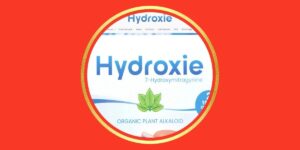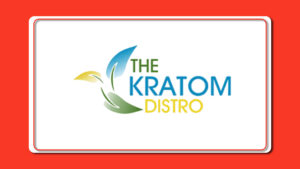The leaves of the Mitragyna speciosa plant have become popular in recent times due to their multiple effects and usefulness. People who use kratom in their daily routines now want to know the nutritional breakdown of the substance including its caloric contents.
People should comprehend kratom’s nutritional characteristics to better decide about its dietary use as a wellness supplement in a balanced life routine. An overview follows to determine if kratom contains calories while analyzing its food composition along with dietary integration practices.
Kratom Explained: Composition, Calories, and Nutritional Insights
Studying the caloric values of kratom starts with recognizing the basic components and nutritional details of the substance.
- Kratom Plant: Kratom grows as a tropical tree that originates from Southeast Asia. After the kratom plant leaves undergo harvesting and drying then manufacturers create various products including powder forms extract variants and liquid preparations from the material.
- Active Compounds: The primary active compounds in kratom are mitragynine and 7-hydroxymitragynine. These alkaloids are responsible for kratom’s unique properties.
- Nutritional Components: The nutritional content of kratom leaves is small enough to make their dietary value unimpressive even when compared to regular supplements.
- Forms of Kratom: Different types of kratom are available as powder and shots which can also be found in drinks or capsule form. The different forms of kratom contain dissimilar vitamin and mineral content.
Kratom’s Nutritional Value
Scientific studies have revealed some details regarding the nutritional elements found in kratom. Kratom offers three components to health: it provides mineral nourishment through Calcium Magnesium and Potassium along with small amounts of vitamins C and B2 and protects antioxidants from flavonoids and polyphenols.
Strive to use kratom in small doses despite its nutritional content because the compounds do not replace the necessary daily dosage. You should not rely on kratom to fulfill your needed Vitamin C intake but mixing it with OJ for a mixed drink will not cause any nutritional damage.
The combination of kratom with nutrition can be achieved by preparing a delightful smoothie that contains the substance.
Nutritional Profile of Kratom
The nutritional value of kratom is minimal since it distributes only minimal amounts of carbohydrates proteins and fats in its composition. Here’s a breakdown of its nutritional profile:
1. Carbohydrates
The main fiber content of Kratom leaves exists as small amounts of carbohydrates. The small amount of carbohydrates in kratom consumption will have minimal effect on your daily diet.
2. Proteins
The protein content in kratom exists only in minute amounts that fail to enhance your daily protein consumption pattern.
3. Fats
The little amount of fat found in kratom makes it a suitable low-fat dietary choice.
4. Micronutrients
The nutritional value of Kratom leaves contains trace components of vitamins and minerals which include calcium together with magnesium and iron.
Small amounts of natural components in kratom prevent people from receiving any noteworthy nutritional advantages.
Does Kratom Have Calories?
Most conscious users of kratom worry about its caloric value when monitoring their dietary consumption. Here’s what you need to know about the calories in kratom:
- Kratom Caloric Content: Kratom contains calories although the total amount remains minimal. Each gram of kratom powder by weight consists of 4-5 calories.
- Serving Size Impact: The number of calories within kratom depends on the portion you use in each serving. A normal portion of kratom powder measuring 3 grams would have a calorie count ranging from 12 to 15.
- Comparison with Other Supplements: The dietary supplement kratom contains so few calories that it remains insignificant when compared to alternative supplements.
- Different Forms: Different kratom products might lead to minimal variations in their calorie amounts. Kratom extracts and kratom shots tend to contain additional calories because of the ingredients that are added to them.
- Kratom Drinks: The calories in liquid kratom and kratom drinks increase because they typically contain sweeteners or flavorings.
- Impact on Diet: Kratom contains limited calories that will not affect your daily calories significantly.
Kratom Caloric Content
Different forms of kratom can have varying caloric content.
Kratom is typically consumed in various forms, each with its caloric considerations. The most prevalent Kratom powder form consists of 4-5 calories which exist in each gram of the substance. Each traditional serving of kratom containing 3 grams leads to 12-15 calories in total.
Each Kratom capsule serves as one of the most sought-after forms which delivers the same amount of pre-measurement caloric value at 4-5 calories per capsule. Most liquid kratom extracts along with tinctures offer minimal caloric value because kratom caloric content depends on both extract concentration levels and supplement ingredients within the solutions.
The amount of calories contained in different kratom types needs to be understood by people who track their dietary intake or plan their Kratom usage.
Here’s a detailed look at the kratom caloric content of various kratom products:
| Kratom Form | Caloric Content per Gram | Typical Serving Size | Total Calories per Serving |
| Kratom Powder | 4-5 calories | 3 grams | 12-15 calories |
| Kratom Extract | 5-6 calories | 1 gram | 5-6 calories |
| Kratom Capsules | 4-5 calories | 2 capsules (1 gram) | 4-5 calories |
| Kratom Shots | – | 1 shot (2 ounces) | 10-20 calories |
| Kratom Drinks | – | 8 ounces | 20-50 calories |
How To Calculate Calories In Kratom?
The procedure to calculate calories in your kratom serving becomes simple with information about the form and quantity of use. Here’s a step-by-step guide:
- Determine the Form: Identify the form of kratom you are using (e.g., kratom powder, kratom extract, kratom capsules).
- Measure the Amount: Use a digital scale to measure the exact amount of kratom in grams.
- Check Kratom Caloric Content: Refer to the caloric content per gram for the specific form of kratom.
- Calculate Total Calories: Multiply the number of grams by the caloric content per gram to find the total calories.
Example:
Using 3 grams of kratom powder with a caloric content of 4-5 calories per gram:
- 3 grams x 4 calories = 12 calories
- 3 grams x 5 calories = 15 calories
- Total calories = 12-15 calories
Factors Influencing the Caloric Content of Kratom
Several factors affect the caloric measurement of kratom. The identification of these influences will help you create a better system for dietary control.
- Form of Kratom: Kratom products exist in three major forms which affect the caloric values differently.
- Additives: The inclusion of sweeteners or flavorings in kratom-based products elevates the total number of calories found in the mixture.
- Processing Methods: The way kratom products are processed results in minimal variations in their caloric content levels. The concentration of extracts tends to be higher than other kratom preparations.
- Serving Size: Food portions of larger sizes automatically carry more calories. The amount served should be monitored to properly control the number of calories consumed.
- Brand Variations: Each kratom product brand might implement unique recipes and ingredients that influence the calorie value in their products.
- User Preparation: When preparing kratom by mixing it with honey or sugar you will increase the total calorie count of the finished product.
Regulatory Guidelines for Nutritional Labeling in Various States
Both consumers and vendors require knowledge about legal nutritional labeling rules that determine if kratom contains calorie content. The rules about kratom product labels which include nutritional data differ throughout states across America.
Federal Regulations
The Food and Drug Administration (FDA) manages dietary supplements and the labels they receive oversight responsibility from at the federal level. Kratom vendors may classify the substance as a supplement even though the Food and Drug Administration has not officially sanctioned it as such.
Here are key points to consider:
- Nutritional Labeling: Any dietary supplement that wants to list nutritional values including calories must have a nutritional label according to the FDA requirements.
- Ingredient Disclosure: Every component of the product along with its calorie content needs disclosure on the label.
- Health Claims: The production of unsubstantiated health statements about kratom along with its caloric content remains prohibited for vendors in this industry.
State Regulations
1. Illinois
- Compliance: Illinois adheres to federal guidelines for dietary supplements. Nothing a vendor produces or sells as kratom may contain inaccuracies or unverified calorie information unless proper nutritional labeling applies.
- Enforcement: Kratom and all other supplements undergo strict state enforcement to meet the regulations mandated by the FDA.
2. California
- Stringent Labeling Laws: The labeling regulations in California rank as the most stringent throughout the United States. All kratom products that wish to present nutritional value must contain specific information regarding their content including calories.
- Proposition 65: Products sold in California require compliance with Proposition 65 which demands cancer-causing and reproductive hazard warnings yet calories are excluded from the requirements.
3. Texas
- Supplement Labeling: Texas requires dietary supplements to display nutritional information according to federal standards. All vendors need to inform consumers about kratom calories along with maintaining precise nutritional information displays.
- Consumer Protection: Consumer protection laws of this state maintain transparent labeling requirements for products.
4. Colorado
- Regulatory Oversight: The labeling standards of federal regulations apply to any dietary supplement that exists in Colorado including the kratom herb. The requirements stipulate to show details about caloric facts if manufacturers make such statements.
- Label Accuracy: The state emphasizes accurate labeling standards because this protects consumers from wrongful information.
5. Florida
- Dietary Supplement Regulations: Florida demands that dietary supplements must follow standards dictated in federal regulations. Manufacturers need to verify and display adequate labeling of any calorie information on their kratom products.
- Inspections and Compliance: Supplement inspections held by the state verify that visible kratom products fulfill their label requirements.
6. Kentucky
- Labeling Requirements: The FDA regulates labeling operations for all dietary supplements with kratom among them in Kentucky. A product displaying the claim of having calories needs to include this information on its labeling.
- Consumer Safety: The state government emphasizes both consumer safety together with accurate nutritional product information.
Key Considerations for Vendors
- Accurate Information: All nutritional values and calorie content must be presented precisely while being visible on product labels.
- Compliance with Local Laws: Dietary supplement operators must understand and obey both national and state regulations that pertain to supplement and nutritional information display.
- Avoid Health Claims: It is essential to refrain from making unauthorized health-related statements about kratom including its calorie amounts because they violate FDA regulatory standards.
Impact of Kratom’s Caloric Content on Your Diet
Given its low caloric content, kratom is unlikely to significantly impact your overall diet. However, here are some considerations:
- Minimal Impact: The calories from kratom are minimal compared to your daily caloric intake.
- Diet Management: If you are closely monitoring your calorie intake, factor in the small calories from kratom, especially if you consume it multiple times a day.
- Supplement Use: Kratom can be a part of your supplement regimen without adding significant calories.
- Additives: Be cautious of additional ingredients in kratom drinks or shots that may add extra calories.
- Balance: Maintain a balanced diet and ensure that your overall nutrient intake meets your health goals.
- Hydration: Drinking plenty of water can help manage any dietary impact from kratom use.
Best Kratom Tablets You Can Find Online
ON7 is the most reliable source of kratom tablets. They are known for their high-quality ingredients which are lab-tested and proven to provide the maximum and optimal results.
They are committed to delivering naturally sourced kratom for three different purposes: focus, relief, and energy. These tablets are pressed with a high-pressure machine so it does not have added fillers or chemicals used in this.
They have 3 types of kratom tablets (Relief, Energy, and Focus), with 20mg per tablet in a pack of 6 servings.
At ON7, they use rigorously tested ingredients and produce kratom tablets with stringent quality controls. They are safe, effective, and natural alternatives for stress relief, energy enhancement, and cognitive support.
You can get kratom tablets for relaxation, focus, and energy. These tablets give more potent and targeted effects compared to traditional kratom products, so you can enjoy potential benefits sooner and with greater intensity.
The team of experts at ON7 has carefully created products to maximize benefits and ensure optimal absorption which is only possible in table form consumption.
Here is the product range of ON7:
Top Products of ON7
1. Relief Tablets
The ON7 Relief tablets contain Mitragynine Pseudoindoxyl which is great in soothing and pain relief.
2. Energy Tablets
The ON7 Energy tablets with 7-hydroxymitragynine (a kratom’s alkaloid) are good in providing a boost to energy levels and helping improve mood.
3. Focus Tablets
The ON7 Focus tablets offer a blend of 7-Hydroxymitragynine and pseudo to help improve focus and nail daily tasks.
Wrapping Up
The low content of nutritional substances and calories in kratom enables people to add it to their dietary plan without altering their normal energy consumption throughout the day.
Despite holding tiny amounts of essential vitamins and minerals as well as alkaloids its starring feature remains derived from its peculiar effects rather than any nutritional worth.
Users need to know how many calories kratom contains when they choose from options such as powder, capsules, or liquid form.

































